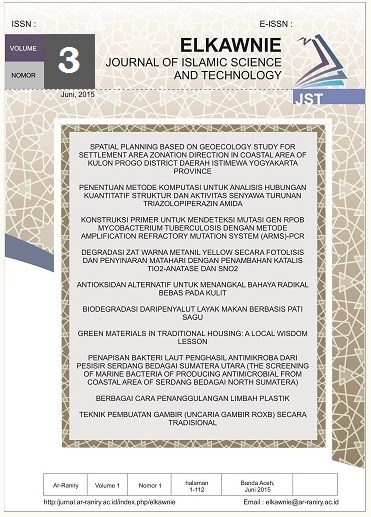E-Human Resource Management Thought And Words - In The Human, Organization, Communication, and Technology
DOI:
https://doi.org/10.22373/ekw.v3i1.2747Keywords:
e-HRM, development, social theoriesAbstract
Human resource factor is a mainly asset in the enterprise, because it has a unique characteristic and will not easy to imitated by the competitor. To make a well management of human resource process and its development in the enterprise is important. Together with the coming of information era, then the utilization of information technology to manage and develop the human resource is really necessary. Its means the human resources which managed traditionally would be change by manage it electronically. In the other word, the term of human resource management (HRM) changed by electronic human resource management (e-HRM). Certainly, to develop and manage e-HRM continuously is not easy without the consideration of such factors that exist within it as: human, organization, communication, and technology factors. Therefore, in this article explained such factor that will encourage these four factors in e-HRM practice, with the result is the e-HRM well management, and finally will increase the human resource development in the enterprise. After the consideration of human, organization, communication and technology factor, then continue by analyzed ten of social theory and used it to encourage the e-HRM development perfectly, where the utilization of each social theory is adjusted with appropriate factor only. The social theories that used in this article are: 1) Attribution theory, 2) Act* theory, 3) Argumentation theory, 4) Contagion theory, 5) Cognitive dissonance theory, 6) Agenda setting theory, 7) Absorptive capacity theory, 8) Actor network theory, 9) Adaptive structuration theory, and 10) Administrative behavior theory. Furthermore, the last part of this article is an explanation of human, organization, ommunication, and technology factor, and how to make each factor will give an effective function in e-HRM practice by using the social theory style in order the development of e-HRM more effective, efficient, and increase continuously.References
Accel Team, (2008), “Employee Motivation: Theory and Practice,â€
Management Managing Better, (Available online at http://
www.accel-team.com/motivation/index.html).
Agenda Setting Theory, (Available online at http://www.tcw.
utwente.nl/theorieenoverzicht/Theory%20clusters/
Public%20Relations%2C%20Advertising%2C%20
Marketing%20and%20Consumer%20Behavior/AgendaSetting_Theory.doc/)
Anderson, J. (1983), “The Architecture of Cognition,†Cambridge,
MA: Harvard University Press.)
Anderson, J.R., Matessa, M., & Lebiere, C., (1997), “ACT-R: A
Theory of Higher Level Cognition and Its Relation to Visual
Attention, Human-Computer Interaction, 12(4), 439-462.
Bernardi, Lauren, M., (2003), “Nine Steps to Effective Discipline,â€
(Available online at:
http://findarticles.com/p/articles/mi_qa5514/is_200301/
ai_n21342155).
Biesalski, E., (2008), “Knowledge Management and e-Human
Resource Managementâ€, Forschungszentrum Informatik
(FZI) & Daimler Chysler AG, Plant Worth D-76131,
Karlsruhe, Germany.
Bohner, G., & Schwarz, N., (1993), “Mood States Influence the Production of Persuasive Arguments,†Communication
Research, 20, 696-722.
Brockriede, W., and Ehninger, D., (1960) “Toulmin on Argument:
An Interpretation and Application,†Quarterly Journal of
Speech (46:1), pp. 44-54.
Bruyère, S., and Erickson, W., (2001), “E-Human Resources: A
Review of the Literature and Implications for People with
Disabilities,†Ithaca, NY: Cornell University, School of
Industrial and Labor Relations Extension Division, Program
on Employment and Disability.
Burt, R.S., (1992), “Structural holes: The social structure of
competition,†Cambridge, MA: Harvard University Press.
Chaffee and Berger, (1987), “What Communication Scientists
Do,†In C. Berger and S. Chaffee, eds., Handbook of
Communication Science, Sage.
Cohen, W., and Levinthal, D., (1990), “Absorptive capacity: a new
perspective on learning and innovation,†Administrative
Science Quarterly 35(1) pp 128-152.
Contractor, N.S. & Eisenberg, E.M., (1990), “Communication
networks and new media in organizations,†In J.Fulk &
C.W. Steinfield (Eds.), Organizations and communication
Technology, (pp.143-172), Newbury Park, CA: Sage.
Corkindale, G., (2008),â€11 Ways to Build Your Personal Brand,â€
Harvard Business Publishing, USA. (Available online
at: http://discussionleader.hbsp.com/corkindale/2008/03/
more_on_personal_brand.html)
Crowell, C.R., (2005), “Beyond Positive Reinforcement: OBM
as a Humanizing Approach to Management Practices,â€
Department of Psychology, University of Notre Dame.
Festinger, L., (1957), “A theory of cognitive dissonance,†Stanford,
CA: Stanford University Press.
Genie, (2008), “Term Paper on Human Resource Management,â€
(available online at http://www.termpapergenie.com/
ElectronicHumanResource.html)
Giddens, A., (1984), “The constitution of society: outline of the
theory of structuration,†University of California Press,
Berkeley, CA.
Heider, F., (1958), “The Psychology of Interpersonal Relations,â€
New York: Wiley.
Hendrickson, A.R. (2003), “Human Resource Information systems:
Backbone technology of contemporary Human Resources,â€
Journal of Labor Research, (24: 3), pp. 381-394.
Herbert, S., (1957), “A Behavioral Model of Rational Choice.†in
Models of Man
Hinesley, G.A., (2007), “E-learning Today: A Review of Research
on Hypertext Comprehension,†AACE Journal, 15(3), 255265.
Hovland, C. I., Janis, I. L. and Kelley, H. H., (1953),
“Communications and Persuasion: Psychological Studies in
Opinion Change,†New Haven, CT: Yale University Press
John, W., & Jones, (1998), “Virtual HR: Human Resources
Management in the Digital Age,†IPMA Assessment
Council Conference, Managing Assessment into the New
Millennium, Chicago.
Kenney, R., (2006), “A Game Base Employee Performance
Rewards Program,†Regence,
(Available online at: http://www.snowfly.com/downloads/regence_
white_paper.pdf).
Kosicki, G., (1993), “Problems and Opportunities in AgendaSetting
Research,†Journal of Communication, 43(2),
Lengnick-Hall, M.L., Moritz, S., (2003), “The impact of e-HR
on the human resource management functionâ€, Journal of
Labor Research (12:3), pp. 365-379
Lepak, D.P., & Snell, S.A., (1998), “Virtual HR: Strategic Human
|
Resource Management in the 21st Century,†Human
Resource Management Review, 8: 215-234.
Downloads
Published
Issue
Section
License
Proposed Policy for Journals That Offer Open Access Authors who publish with the Elkawnie journal agree to the following terms:
a. Authors retain copyright and grant the journal right of first publication with the work simultaneously licensed under a Creative Commons Attribution License that allows others to share the work with an acknowledgement of the work's authorship and initial publication in this journal.
b. Authors are able to enter into separate, additional contractual arrangements for the non-exclusive distribution of the journal's published version of the work (e.g., post it to an institutional repository or publish it in a book), with an acknowledgement of its initial publication in this journal.
c. Authors are permitted and encouraged to post their work online (e.g., in institutional repositories or on their website) prior to and during the submission process, as it can lead to productive exchanges, as well as earlier and greater citation of published work (see The Effect of Open Access).

























